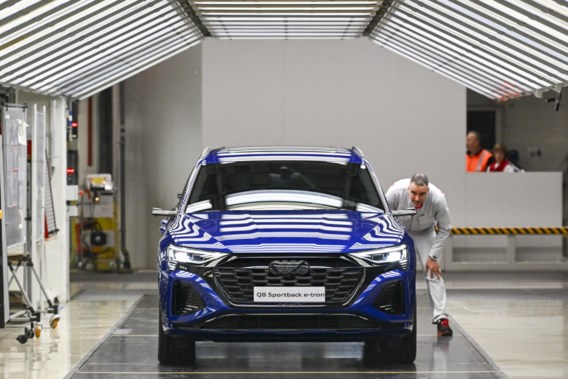Automotive sector
The first meeting of the interregional task force to safeguard the future of Audi Vorst took place on Friday. The analysis is that it will be a challenging but not unfeasible dossier.
An interregional task force was put together for the possible rescue of Audi Vorst, involving several federal ministers, but also ministers from the three regions. The initiative comes from Prime Minister Alexander De Croo (Open VLD). The interregional cooperation for Audi Brussels contrasts with the complete absence of the federal level in the failed rescue attempt of bus builder Van Hool.
The various entities went to the meeting on Friday with an inventory of what is in their toolbox. This concerns, for example, training and innovation support and other financial guarantees. The aim is to convince the German owners to allocate a new model to Audi Vorst now that production of the Q8 e-tron will end in 2027. That model is being updated and shifted to Mexico. It says something about the challenge Vorst is facing. There is a lot of car assembly activity in Mexico and labor costs are a lot lower.
From VW to Audi
Things were already difficult at Audi Vorst when production of the Audi A1 shifted to Spain in 2018. Even more distantly, a crisis arose in 2006 when the then Volkswagen factory lost production of the Golf and the factory had to be saved for the first time. This led to the conversion of the VW factory into an Audi factory, with 3,200 fewer jobs than before.
Employment and production at Audi’s Brussels factory have been under pressure again for some time. It is a highly unionized factory with approximately 3,000 employees on the payroll. The management of Audi Brussels previously decided to stop temporary employment, resulting in the disappearance of 371 temporary jobs. Car production was slowed down to better spread the available work. The reduction of these temporary jobs led to a strike notice.
The analysis is that the Brussels factory also has assets. The tax benefits of night and shift work, among other things, would mean that wage costs are no higher than in Germany. Earlier this year, the Constitutional Court shot the tax benefits for shift work to pieces, but the government then developed a temporary safety net at the proposal of Minister of Finance Vincent Van Peteghem (CD&V) that will remain in place until 2026. The system of temporary unemployment is also generally seen as an asset. The question is how many additional benefits are needed to persuade Audi to continue in Forest.
The usually well-informed website Automobilwoche previously wrote that Volkswagen, of which Audi is part, is looking for a solution for Audi Brussels. It is not known exactly what is on the table of the task force. Ministers were obliged to sign a confidentiality clause, a demand from the Germans. It is clear that a number of avenues were discussed that will now be further developed. A new task force meeting would take place in mid-May. Until further notice, November remains the deadline that Audi would use for the decision on a possible successor to the Q8 e-tron at Audi Brussels. Nothing has yet been heard about a cost-benefit analysis of a possible rescue. It is also not known what the price tag and benefits were of the earlier rescue of the Brussels factory.

